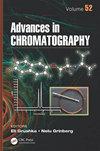Advanced capillary liquid chromatography-mass spectrometry for proteomics
4区 化学
Q4 Chemistry
引用次数: 4
Abstract
The liquid chromatography (LC)-mass spectrometric (MS) analysis of peptides has become a routine method for proteomics – the study of the entire complement of proteins e.g., expressed by a cell under a specific set of conditions at a specific time. Mixtures of peptides, such as those generated from enzymatic (e.g., trypsin) digestion of globally recovered proteins (i.e. a proteome), are typically very complex and >100,000 different molecular species may be observable using MS detection [1]. LC separations implemented prior to MS for broad protein identification have three major roles: 1) to isolate individual components or reduce complexity as much as possible, 2) to increase sensitivity by concentrating the components into narrow zones prior to MS, and 3) to eliminate or displace interfering species (e.g., salts and polymers) that may be present in proteomics samples. A desired quality of LC separation can be achieved from the use of either multiple steps of moderate quality separations, or fewer steps of high power separations. The former approach is generally more easily accessible for very high quality separations due to the variety of commercialized LC platforms available, while the latter still often requires considerable developmental efforts (for both columns and instrumentation). In addition tomore » proteomics data quality, other differences between these two approaches include proteomics analysis time and sample consumption (and subsequent analysis costs), as well as direct impact on potential proteomics applications that have special requirements in terms of analysis coverage, sample size, dynamic range, sensitivity, and throughput.« less先进的毛细管液相色谱-质谱法用于蛋白质组学
多肽的液相色谱(LC)-质谱(MS)分析已成为蛋白质组学的常规方法,蛋白质组学研究蛋白质的整个补体,例如,在特定条件下在特定时间由细胞表达。肽的混合物,例如由酶(如胰蛋白酶)消化全局恢复的蛋白质(即蛋白质组)产生的肽,通常非常复杂,使用质谱检测可以观察到100,000种不同的分子物种。在质谱之前进行的LC分离用于广泛的蛋白质鉴定有三个主要作用:1)分离单个组分或尽可能地降低复杂性,2)通过在质谱之前将组分浓缩到狭窄区域来提高灵敏度,3)消除或取代可能存在于蛋白质组学样品中的干扰物质(例如盐和聚合物)。期望的LC分离质量可以通过使用多个中等质量的分离步骤或更少的高功率分离步骤来实现。由于可用的各种商业化LC平台,前一种方法通常更容易获得非常高质量的分离,而后一种方法通常仍然需要大量的开发工作(对于色谱柱和仪器)。除了蛋白质组学数据质量之外,这两种方法之间的其他差异还包括蛋白质组学分析时间和样品消耗(以及随后的分析成本),以及对潜在的蛋白质组学应用的直接影响,这些应用在分析覆盖范围、样本量、动态范围、灵敏度和吞吐量方面有特殊要求。«少
本文章由计算机程序翻译,如有差异,请以英文原文为准。
求助全文
约1分钟内获得全文
求助全文

 求助内容:
求助内容: 应助结果提醒方式:
应助结果提醒方式:


